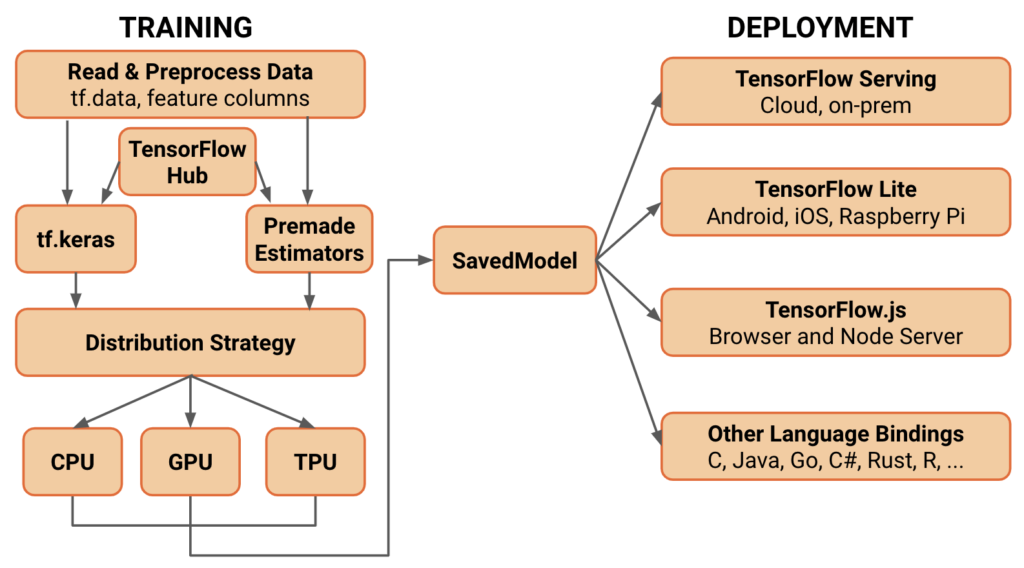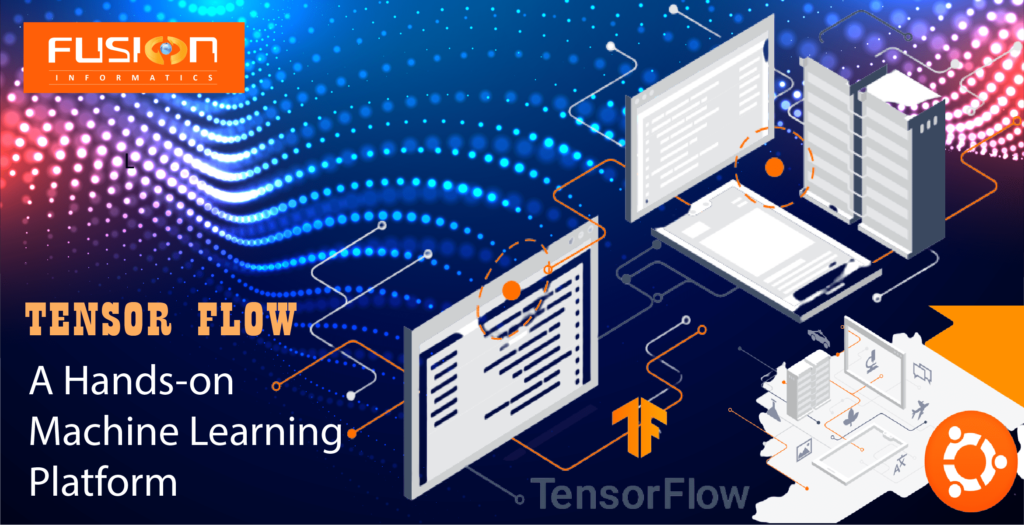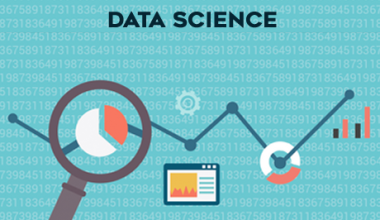TensorFlow is a hands-on machine learning platform that is free and open source. It is a symbolic math library that performs deep neural network training and inference tasks using dataflow and differentiable programming. It allows developers to create machine learning applications by combining a number of tools, libraries, and community resources.
TensorFlow, developed by Google, is currently the most well-known deep learning library in the world. All of Google’s products use machine learning to improve the search engine, translation, image captioning, and recommendations.
It combines models and algorithms from Machine Learning and Deep Learning. It makes use of Python as a convenient front-end and runs it in optimized C++.
Developers can also create a graph of computations to perform. Each graph node represents a mathematical operation, and each connection represents data. As a result, instead of worrying about minor details like how to connect the output of one function to the input of another, the developer can concentrate on the overall logic of the application.
TensorFlow was created in 2015 by Google Brain’s deep learning artificial intelligence research team for internal use. The research team relies on this Open-Source Software library to complete a number of critical tasks.
TensorFlow is the most popular software library at the moment. TensorFlow is popular due to several real-world deep learning applications. TensorFlow, an Open-Source deep learning and machine learning library, has applications in text-based applications, image recognition, voice search, and many more.
TensorFlow is used for image recognition in DeepFace, Facebook’s image recognition system. It is used for voice recognition by Apple’s Siri. Every Google app you use makes good use of TensorFlow to improve your experience.
TensorFlow’s Operation
TensorFlow allows you to create dataflow graphs and structures to define how data moves through a graph by taking inputs in the form of a multidimensional array called Tensor. It enables you to create a flowchart of operations that can be performed on these inputs, which goes at one end and returns as output at the other.
Architecture of TensorFlow

The name Tensorflow comes from the fact that it accepts input in the form of a multidimensional array, also known as a tensor. You can create a flowchart that details the operations you want to perform on that input (called a Graph). The input comes in at one end, flows through this complicated system of operations, and then exits as output at the other.
Tensorflow architecture is divided into three parts:
- Data preprocessing
- Create the model.
- Model training and estimation
Where can Tensorflow run?
TensorFlow hardware and software requirements can be divided into two categories.
The mode is trained during the development phase. Training is typically conducted on a desktop or laptop computer. Tensorflow can be run on a variety of platforms after the training phase is complete. It is possible to run it on:
- Desktop running Windows, macOS, or Linux
- Mobile devices like iOS and Android
- Cloud as a web service
You can train it on multiple machines and then run it on a different machine once the model is trained.
The model can be trained and used on both GPUs and CPUs. GPUs were originally intended for use in video games. Stanford researchers discovered in late 2010 that GPUs were also very good at matrix operations and algebra, making them very fast for doing these types of calculations.
Deep learning is heavily reliant on matrix multiplication. TensorFlow is extremely fast at matrix multiplication because it is written in C++. TensorFlow, despite being implemented in C++, can be accessed and controlled by other languages, most notably Python.
Finally, the TensorBoard is an important feature of TensorFlow. TensorFlow can be monitored graphically and visually using the TensorBoard.
Components of TensorFlow
Tensor
Tensorflow gets its name directly from its core framework: Tensor. Tensors are used in all computations in Tensorflow. A tensor is an n-dimensional vector or matrix that represents all types of data. A tensor’s values all have the same data type and a known (or partially known) shape. The dimensionality of the matrix or array is determined by the shape of the data.
A tensor can be created from input data or the outcome of a computation. All operations in TensorFlow take place within a graph. The graph is a series of computations that occur one after the other. Each operation is called an op node, and they are all connected.
Graphs
TensorFlow employs a graph framework. The graph collects and describes all of the series computations performed during training. The graph has numerous advantages:
- It was created to run on multiple CPUs or GPUs, as well as mobile operating systems.
- The graph’s portability enables the computations to be saved for immediate or future use. The graph can be saved and executed later.
- All of the computations in the graph are accomplished by connecting tensors.
- A tensor consists of a node and an edge. The node performs the mathematical operation and generates endpoint outputs. The edges of nodes explain their input/output relationships.
Why is TensorFlow so popular?

TensorFlow is the best library of all because it is designed to be user-friendly. Tensorflow library includes various API for creating large-scale deep learning architectures such as CNN or RNN. TensorFlow is based on graph computation, and it allows the developer to visualize the neural network construction with Tensorboard. This tool is useful for program debugging. Finally, Tensorflow is designed to be deployed at scale. It is powered by both the CPU and the GPU.
When compared to other deep learning frameworks, Tensorflow has the most popularity on GitHub.
Summary
- TensorFlow definition: TensorFlow is the most well-known deep learning library in recent years. A TensorFlow practitioner can create any deep learning structure, such as CNN, RNN, or a simple artificial neural network.
- Academics, startups, and large corporations are the most common users of TensorFlow. TensorFlow is used in almost all Google products, including Gmail, Photos, and the Google Search Engine.
- TensorFlow was created by the Google Brain team to bridge the gap between researchers and product developers. TensorFlow was made public in 2015, and it is rapidly gaining popularity. TensorFlow is currently the deep learning library with the most GitHub repositories.
- Tensorflow is popular among practitioners because it is simple to scale. It is designed to run in the cloud or on mobile devices such as iOS and Android.




